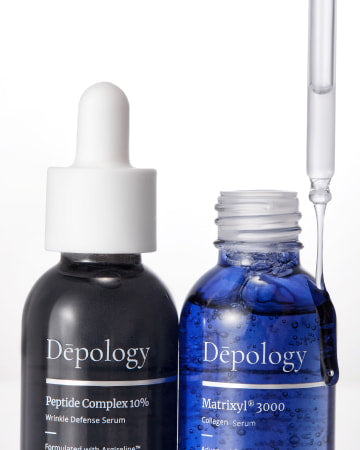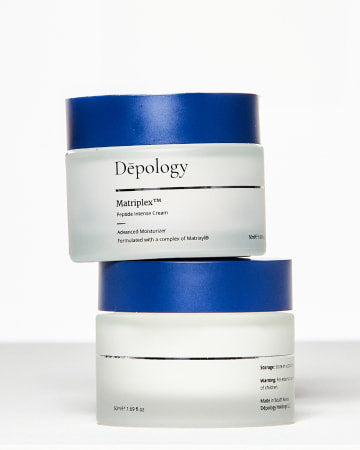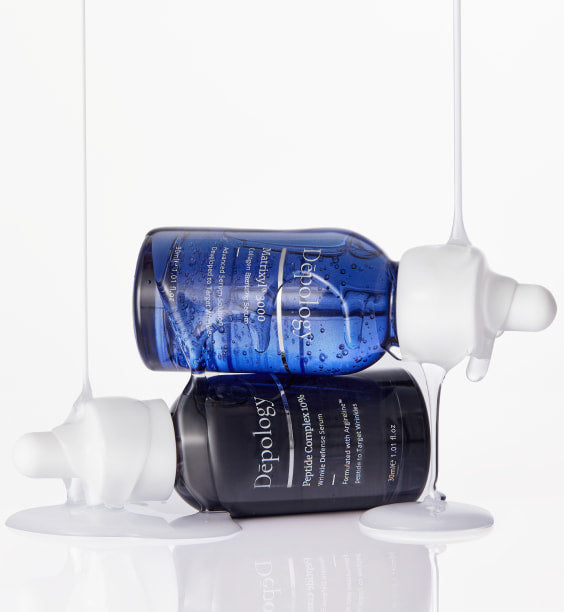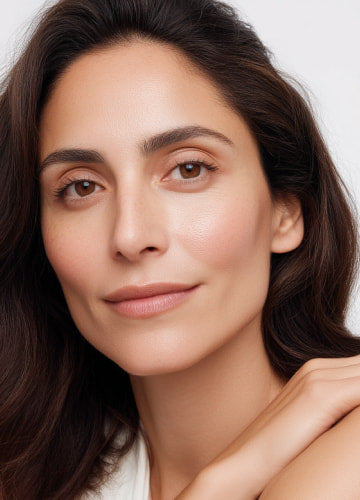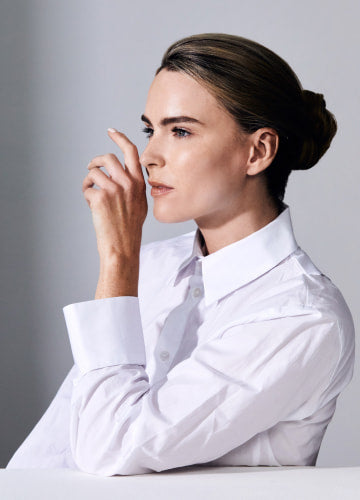
Can I Use Retinol With Niacinamide? | Retinol Pairing Guides
Welcome to our in-depth exploration of retinol, a true superstar in the world of skincare. If you've ever been puzzled by questions like "Can I mix retinol with [insert your favorite skincare ingredient here]?" then you're in the right place!
Retinol is hands-down one of the most effective ingredients in skincare—but it's not always as simple as applying a little retinol serum on your face. We want a simple, streamlined routine, but that doesn't always mean using one single retinol.
We're diving deep into the dos and don'ts of retinol pairing to help you make the most of your skincare routine. Let's begin with understanding retinol and then move on to its best companions.
How does retinol work for your skin?
Before we pair it with anything, let's understand what retinol does. Retinol, a form of Vitamin A, is a powerhouse in promoting skin renewal, enhancing collagen production, and fighting signs of aging. It accelerates cell turnover, fades dark spots, and improves skin texture. But it's not a one-night wonder – patience and consistent use are key!
What are the key benefits of retinol for your skin?
- Smooths Out Wrinkles: Retinol helps reduce fine lines and wrinkles, giving your skin a younger, refreshed look.
- Battles Acne: It works deep in your skin to keep pores clear and reduce oiliness, helping prevent breakouts.
- Gives Smoother Skin: Retinol clears away dead skin and reveals a softer, smoother complexion.
- Fades Dark Spots: Helps lighten sun spots, age spots, and past acne marks for an even skin tone.
- Boosts Overall Glow: Retinol sheds dullness and reveals a brighter, more vibrant complexion.
Just remember—retinol needs time and patience. Start slow, let your skin adjust, and always use sunscreen!
Can I use retinol with? — Retinol pairing guides
Retinol is a skincare superstar, not just for its benefits like smoothing wrinkles and fighting acne, but also for how it teams up with other ingredients. Some combinations work beautifully, while others may cause irritation.
It's not a one-size-fits-all situation. Mixing retinol with different skincare buddies depends on what your skin can tolerate. We're here to guide you through the best pairings so you can glow without the irritation.
Can I use retinol with niacinamide?
Retinol with Niacinamide: Yes, you can! This combination is highly effective. Niacinamide helps soothe the skin and minimize redness caused by retinol. Together, they target aging, redness, and pores.
How to use niacinamide with retinol?
Simple Morning Routine (AM):
- Cleanse: Use a gentle cleanser.
- Tone: Optional but helpful.
- Protection: Apply Vitamin C serum.
- Niacinamide Serum: Use a niacinamide serum.
- Moisturize
- Sunscreen: SPF 30 or higher.
Simple Night Routine (PM):
- Cleanse
- Tone
- Hydrating Serums (avoid eyes)
- Moisturize: Wait 15–20 minutes before applying Anti-Aging Retinol Night Moisturizer.
- Eye Cream: Apply last.
Can I use retinol with vitamin C?
Retinol with Vitamin C: They can work together, but not at the same time. Vitamin C brightens and protects in the morning, while retinol renews skin at night. Using them together can cause irritation because both are potent and thrive at different pH levels.
How to use vitamin C with retinol?
Simple Morning Routine (AM):
- Cleanse: Use a gentle cleanser.
- Tone
- Vitamin C Serum: Apply Power C serum.
- Moisturize
- Sunscreen: SPF 30+
Simple Night Routine (PM):
- Cleanse
- Tone
- Eye Cream
- Hydrating Peptide Serum
- Retinol Night Cream: Depology Retinol Night Cream
Can I use retinol with hyaluronic acid?
Hyaluronic Acid, Niacinamide, and Retinol: These three together form a complete routine. Retinol renews the skin, niacinamide soothes irritation, and hyaluronic acid hydrates deeply.
Retinol with Hyaluronic Acid: Yes! This is an excellent combination. Hyaluronic acid provides hydration and prevents dryness commonly associated with retinol use.
How to use hyaluronic acid with retinol?
Simple Morning Routine (AM):
- Cleanse: Start with a gentle cleanser.
- Tone
- Hyaluronic Acid Serum: Apply a hyaluronic acid serum.
- Moisturizer: Lock in hydration.
- Sunscreen: SPF 30+.
Simple Night Routine (PM):
- Cleanse
- Tone
- Hyaluronic Acid Serum: Use a lightweight hydrating serum.
- Retinol Night Cream: Apply retinol evenly.
- Extra Moisturizer (Optional)
Can I use glycolic acid with retinol?
Retinol with Glycolic Acid: This combination can be too strong. Both ingredients exfoliate and stimulate the skin. Using them together often leads to irritation, redness, or peeling. It's better to alternate them.
How to use glycolic acid with retinol?
Evening Routine (Alternate Nights)
Option A: Glycolic Acid Night
- Cleanse
- Glycolic Acid Product: Apply toner, serum, or exfoliating solution.
- Moisturize
Option B: Retinol Night
- Cleanse
- Follow Your Routine
- Retinol Night Cream: Use retinol cream.
Key Points:
- Alternate nights to prevent over-exfoliation.
- Hydrate well to support the skin barrier.
- Use sunscreen daily.
- Monitor sensitivity and adjust frequency.
Can I use salicylic acid with retinol?
Retinol with Salicylic Acid: Use with caution. Both exfoliate the skin, and combining them increases irritation risk. Unless your skin is very resilient, avoid using the two together on the same night.
Salicylic acid is excellent for acne, oily skin, and clogged pores. But remember, combining it with retinol may cause dryness or sensitivity.
How to use salicylic acid with retinol?
- Alternate nights instead of layering them.
- Use gentle cleansers.
- Keep the skin hydrated.
- Apply SPF every morning.
- Watch for irritation.
Alternating these two ingredients gives you the benefits of both without overwhelming the skin.
Can I use mandelic acid with retinol?
Retinol with Mandelic Acid: Mandelic acid is gentler than glycolic acid, but still an exfoliant. Combining with retinol is usually too harsh for most skin types. Use separately or alternate nights.
Can I use alpha arbutin with retinol?
Retinol with Alpha Arbutin: Yes, these pair beautifully. Retinol improves skin texture and reduces wrinkles, while alpha arbutin brightens the skin and reduces pigmentation. Together, they target multiple skin concerns.
How to use alpha arbutin with retinol?
Simple Morning Routine (AM):
- Cleanse
- Protection: Apply Vitamin C serum.
- Alpha Arbutin Serum: Use a brightening serum.
- Moisturize
- Sunscreen: Essential for preventing further pigmentation.
Simple Night Routine (PM):
- Cleanse
- Tone
- Hydrating Serum (Optional)
- Alpha Arbutin Serum: Target dark spots.
- Retinol Night Cream: Apply evenly.
This routine helps brighten dark spots while improving skin texture and tone.
Can I use copper peptides with retinol?
Retinol with Copper Peptides: Yes! This is a beneficial and gentle pairing. Copper peptides support skin repair and healing, complementing retinol’s cell-renewing effects.
How to use copper peptides with retinol?
Simple Morning Routine (AM):
- Cleanse
- Tone
- Copper Peptide Serum: Helps support collagen and healing.
- Moisturize
- Sunscreen: Always SPF 30+.
Simple Night Routine (PM):
- Cleanse
- Tone
- Copper Peptide Serum
- Retinol Night Cream: Use your retinol cream.
What NOT to mix with retinol
Retinol is powerful—and like a strong personality—it doesn’t get along with everyone. Avoid pairing it with the following:
- Benzoyl Peroxide: Both fight acne, but together they can deactivate each other and irritate the skin. Use benzoyl peroxide in the morning and retinol at night.
- Vitamin C: Too strong together and can reduce each other's effectiveness. Vitamin C (AM), retinol (PM).
- AHAs/BHAs (Glycolic, Lactic, Salicylic Acid): Too much exfoliation leads to irritation. Use on alternate nights.
- Physical Exfoliants: Scrubs + retinol can cause micro-tears and severe irritation.
- Essential Oils / Fragrances: These can irritate the skin, and the irritation becomes worse when combined with retinol.
- Alcohol-based Products: They dry out the skin, and retinol already increases dryness.
Conclusions: Can I use retinol with niacinamide?
Retinol is truly a skincare superstar. It’s not only effective for wrinkles and dark spots but also helps renew and revitalize the skin overall. Its flexibility to pair with many other ingredients makes it a powerful tool in any routine.
But like a strong friend, retinol needs to be introduced thoughtfully. With the right partners—such as hydrating hyaluronic acid or soothing niacinamide—retinol shines even brighter.
Just remember: pairing retinol requires balance. The wrong combination can irritate the skin. Always approach it patiently and listen to your skin’s needs.
Incorporating retinol into your skincare routine is a journey toward healthier, smoother, more radiant skin. Let retinol be your trusted companion in achieving the glow you deserve.
Quick Tips
- Consistency is Key: Regular use brings the best results.
- Gentle Patting: Apply serums and creams by patting, not rubbing.
- Sunscreen is a Must: SPF every morning is non-negotiable.
- Listen to Your Skin: Reduce frequency if irritation occurs.
Frequently Asked Questions
Can I use niacinamide and retinol every day?
Yes, you can use niacinamide with retinol daily, as long as your skin tolerates both ingredients well.
How often should you use retinol?
The frequency depends on your skin tolerance and the strength of the retinol. If you're new, start once or twice per week and gradually increase as your skin adjusts.
Can I use collagen and retinol together?
Yes, collagen and retinol pair very well. They are often used together in serums, creams, and liquid collagen formulations to provide complementary anti-aging benefits.



